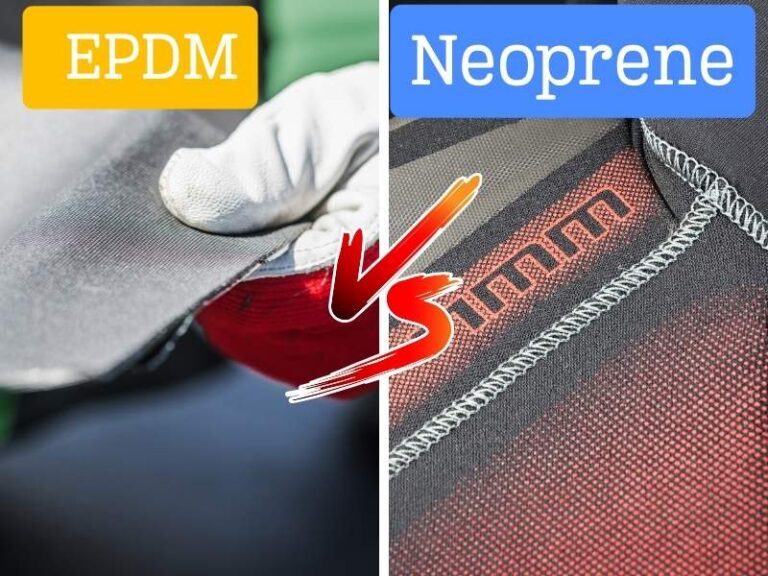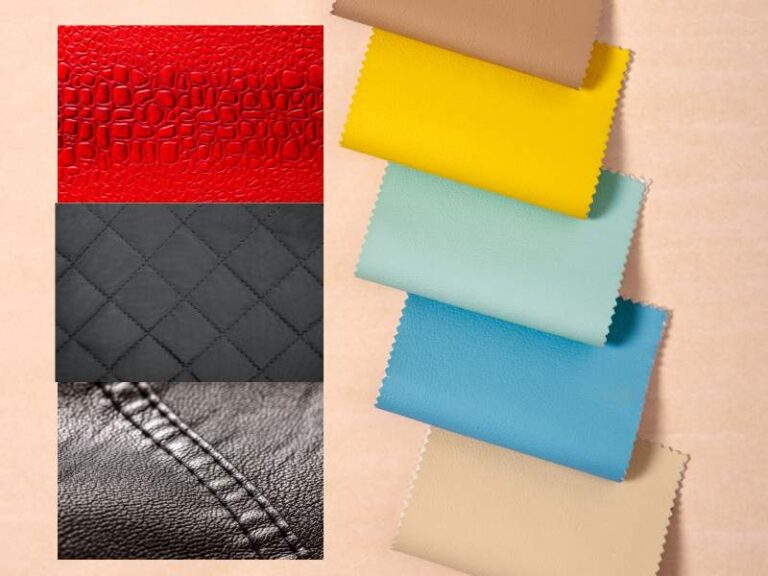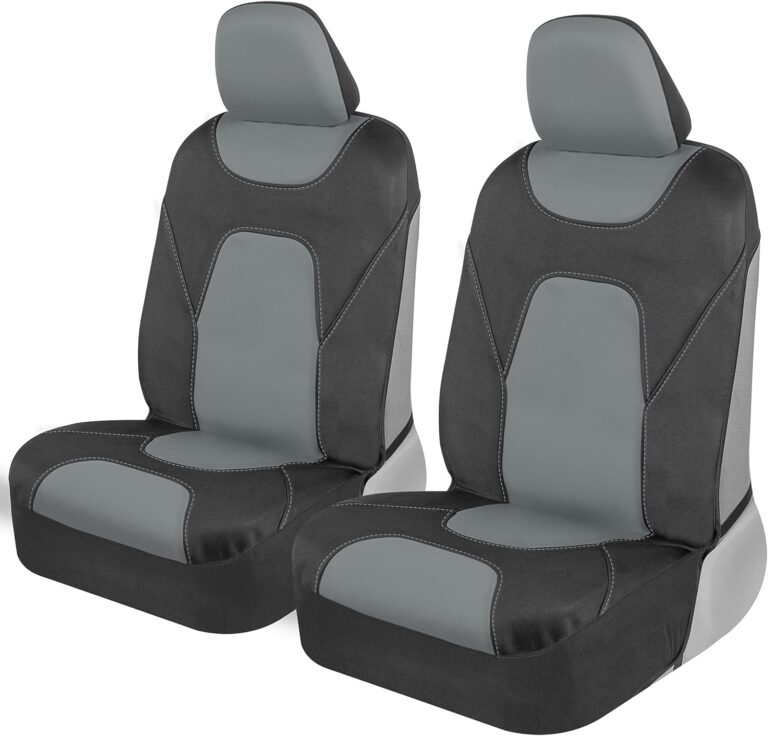Which is Better Spandex Or Neoprene?
Spandex is better than neoprene in terms of flexibility and movement. Spandex offers superior stretch and recovery, making it ideal for activities requiring a wide range of motion.
Additionally, it is lightweight, breathable, and quick-drying, making it suitable for sportswear. Neoprene, on the other hand, is widely used in wetsuits and for insulation purposes due to its excellent thermal properties and water resistance. However, it is less stretchable than spandex and may restrict movement during certain activities.
The choice between spandex and neoprene ultimately depends on the specific needs and requirements of the individual or the intended use of the material. So, whether it’s for intense workouts or water sports, understanding the characteristics of spandex and neoprene is essential in making the right choice.
Spandex Vs Neoprene: Ultimate Winner Revealed
Spandex and neoprene are two highly popular materials known for their unique properties. Spandex, a synthetic fiber known for its exceptional elasticity, offers a stretchy and form-fitting quality. It possesses an extraordinary ability to recover its original shape, making it an ideal choice for activewear, swimwear, and athletic apparel. On the other hand, neoprene, a type of synthetic rubber, is renowned for its insulation and water-resistant properties.
This makes it highly suitable for wetsuits, gloves, and accessories that require protection against extreme elements. When it comes to performance, both spandex and neoprene have their areas of strengths. Spandex excels in providing unrestricted movement, enhancing mobility in sports and fitness activities. Neoprene, with its excellent insulation and cushioning properties, offers superior protection and thermal regulation.
Therefore, the “better” choice between the two ultimately depends on the specific requirements of the intended use. In conclusion, each material has its own distinct advantages, making them suitable for different applications. Understanding the unique properties of spandex and why neoprene is a popular material choice can help you make an informed decision when it comes to selecting the best material for your needs.
Fabric Fundamentals: Spandex
Spandex, also known as elastane, is a versatile synthetic fabric that offers a combination of stretch, elasticity, and durability. Key attributes of spandex make it an ideal choice for various applications.
Spandex’s ability to stretch up to 500% of its original size and then return to its original form sets it apart from other fabrics. This exceptional elasticity allows for a perfect fit, ensuring comfort and freedom of movement.
Apparel manufacturers commonly use spandex in garments that require flexibility and fit, such as athletic wear, swimwear, and activewear. Its stretchiness ensures these garments conform to the body, providing support and enhancing performance. Moreover, spandex plays a crucial role in accessories like socks, gloves, and belts, where stretchability is essential.
One of the major benefits of spandex is its outstanding ability to maintain its shape. Unlike other fabrics that tend to become baggy or sag with prolonged use, spandex retains its stretchiness and form, even after frequent wear and washing. This durability makes it a cost-effective choice in the long run.
Neoprene Essentials
In the world of materials used for various applications, it is important to consider the unique properties and characteristics of each option. When comparing Spandex and Neoprene, it becomes evident that Neoprene offers a range of benefits that make it a preferred choice for many industries.
- Neoprene’s distinctive characteristics set it apart from other materials. Its ability to withstand extreme temperatures, water resistance, and excellent insulation properties makes it highly versatile.
- Beyond clothing, Neoprene finds diverse applications in industries such as automotive, sportswear, electronics, and even medical equipment.
- One of the major advantages of Neoprene is its durability. It can withstand wear and tear, making it suitable for long-term use.
- Moreover, Neoprene offers excellent protection against impact and abrasions, making it ideal for protective gear and equipment.
The Face-off: Spandex Or Neoprene

When it comes to flexibility and stretchability, both spandex and neoprene offer excellent properties. Spandex, a highly elastic synthetic fiber, is known for its exceptional stretch and recovery. It is commonly used in activewear and swimwear, providing a snug fit and allowing for a wide range of movement. On the other hand, neoprene, a synthetic rubber, also offers great flexibility. Its stretchability is particularly useful in applications such as wetsuits and compression garments.
In terms of thermal insulation and climate resistance, neoprene takes the lead. Due to its closed-cell structure, neoprene provides excellent insulation, keeping the body warm in cold environments, making it popular for diving suits and winter gear. Additionally, neoprene is highly resistant to weather elements, making it perfect for outdoor use.
Lifespan and durability are some of the key factors to consider. Spandex tends to have a shorter lifespan compared to neoprene. With regular use and washing, spandex garments may lose their elasticity over time. Conversely, neoprene boasts exceptional durability, maintaining its shape and elasticity even after repeated use and exposure to harsh conditions.
| Spandex | Neoprene | |
|---|---|---|
| Flexibility and stretchability | Excellent | Great |
| Thermal insulation and climate resistance | Lower | Higher |
| Lifespan and durability | Shorter | Longer |
Suiting Your Needs: Application Specifics
Both spandex and neoprene have unique properties, making them suitable for different applications. Spandex is known for its stretchability, making it ideal for sportswear and swimwear. On the other hand, neoprene provides excellent insulation and water resistance, making it a preferred choice for wetsuits and protective gear.
Ultimately, the better option depends on your specific needs and requirements.
Today, we are going to discuss whether spandex or neoprene is better suited for your needs. Let’s start by exploring their applications in different scenarios:
| Best for athletic wear: Spandex or Neoprene? | Ideal for water sports: Comparing characteristics | Everyday usability and maintenance ease |
|---|---|---|
| Spandex is an excellent choice for athletic wear due to its exceptional stretchability and flexibility. It provides a snug fit and allows for unrestricted movement during physical activities. | Neoprene, on the other hand, is the preferred material for water sports. It offers excellent insulation and buoyancy, making it ideal for diving, surfing, and other water-related activities. | Both spandex and neoprene have their advantages in everyday usability and maintenance. Spandex is lightweight and easy to wash, making it perfect for regular use. Neoprene, while slightly bulkier, is highly durable and can withstand harsh conditions. |
Ultimately, the choice between spandex and neoprene depends on the specific application and your individual preferences. Take into consideration the intended use and the desired characteristics when deciding which material to choose.
Making The Choice: Factors To Consider
When deciding between Spandex or Neoprene for your needs, it’s essential to consider several factors that can impact your choice.
Firstly, personal comfort versus performance needs should be taken into account. While Neoprene offers better insulation and durability for water-based activities, Spandex provides superior flexibility and breathability for activities requiring a wide range of motion.
Another important aspect to consider is the environmental impact and sustainability concerns. Neoprene is typically made from synthetic rubber, which requires petroleum to manufacture and has a higher carbon footprint. On the other hand, Spandex is derived from petroleum as well, but advancements in recycling techniques have made it a more sustainable option.
Lastly, the price point and value for money can influence your decision. Spandex tends to be more affordable and widely available, making it a popular choice for many. Neoprene, on the other hand, is generally more expensive due to its specialized properties.
Comparison Table
| Factors | Spandex | Neoprene |
|---|---|---|
| Personal comfort vs. performance needs | Superior flexibility and breathability | Better insulation and durability |
| Environmental impact and sustainability concerns | Derived from petroleum; recycling advancements | Synthetic rubber; higher carbon footprint |
| Price point and value for money | Affordable and widely available | Generally more expensive |
User Experiences And Testimonials
Discover which material is superior, spandex or neoprene, for the ultimate user experience. Hear genuine testimonials comparing the benefits of each fabric.
Real-world feedback highlights the benefits of both spandex and neoprene. Users have reported that spandex offers exceptional flexibility and stretchability, allowing for greater freedom of movement during physical activities. Its lightweight nature makes it a popular choice for bikers, runners, and dancers.
On the other hand, neoprene users have praised its excellent insulation and water resistance properties. Its ability to retain heat makes it a preferred material for water sports enthusiasts and cold weather activities. The durability of neoprene also ensures longevity and sustainability, as it can withstand regular wear and tear.
| Activity | Preferred Material |
|---|---|
| Biking | Spandex |
| Running | Spandex |
| Dancing | Spandex |
| Water Sports | Neoprene |
| Cold Weather Activities | Neoprene |
Based on a recent survey, it was found that the preferred material varied depending on the activity. Spandex was the top choice for biking, running, and dancing, while neoprene was favored for water sports and cold-weather activities.
Material Science Advances
Spandex has experienced remarkable advancements in recent years, elevating its performance in athletic and everyday wear. Manufacturers have developed new weaving and knitting techniques that enhance its durability and flexibility. The incorporation of moisture-wicking properties and UV protection has also made spandex more functional for outdoor activities. Additionally, advancements in dyeing techniques have resulted in vibrant and fade-resistant colors that last longer. These improvements in spandex technology have revolutionized the fashion industry and provided consumers with more comfortable and versatile garments.
Neoprene, on the other hand, has seen advancements mainly in its production and manufacturing processes. Innovations in chemical formulations and manufacturing techniques have resulted in lighter and more breathable neoprene. These improvements have made neoprene an ideal material for wetsuits and other water sports gear.
Moreover, neoprene’s ability to withstand extreme temperatures and resist degradation has made it popular in various industries. As technology continues to evolve, we can expect further breakthroughs in neoprene production, leading to even better performance and comfort.
With the rapid pace of material science advancements, it is exciting to envision the future of performance fabrics. As demand grows for sustainable and eco-friendly options, we can anticipate the development of innovative fabrics that are not only high-performance but also environmentally conscious. Nanotechnology could play a significant role in creating fabrics with enhanced properties, such as self-cleaning or self-cooling capabilities.
The integration of smart textiles, embedded with sensors and conductive fibers, could also revolutionize the functionality of performance fabrics. The future holds endless possibilities for fabric technology, and we can expect a continuous evolution of materials that cater to the ever-changing needs of consumers.
Market Trends And Industry Preferences
The fashion and sportswear industry is constantly evolving, and consumers are always on the lookout for the latest trends and innovations in activewear. In recent years, there has been a growing interest in materials like spandex and neoprene.
Both spandex and neoprene have gained popularity among consumers due to their unique properties and benefits. Spandex, known for its exceptional stretchiness and elasticity, is a favored choice for activewear that requires flexibility and comfort. On the other hand, neoprene, a synthetic rubber, offers excellent insulation and waterproofing qualities, thus making it ideal for wetsuits and water sports.
In terms of consumer trends, it is evident that spandex remains a top choice for its ability to provide a perfect fit and enhance mobility. Many consumers prefer spandex-based fabrics for their workout gear, yoga attire, and compression garments.
However, it is worth noting that neoprene has also gained recognition in the fashion and sportswear industry. Its popularity can be attributed to professional athletes’ endorsements and preferences. Many athletes consider neoprene-based products as their go-to option for intense workouts and sports activities.
Overall, both spandex and neoprene have their distinct advantages and consumer preferences within the fashion and sportswear market. The industry will continue to evolve as new technologies and materials are introduced, catering to the ever-changing needs and demands of consumers.
Frequently Asked Questions Of Which Is Better Spandex Or Neoprene?
Is Spandex Or Neoprene Better For Fitness Clothing?
Spandex is better for fitness clothing because it offers great flexibility and breathability, allowing for better movement and sweat-wicking properties. Neoprene, on the other hand, is better suited for wet conditions and provides insulation, making it ideal for activities like swimming or diving.
Which Material Is More Durable, Spandex Or Neoprene?
Neoprene is generally more durable than spandex. It is resistant to wear and tear and can withstand exposure to harsh elements, making it suitable for activities like water sports. Spandex is also durable but may lose its elasticity over time, especially with frequent stretching and washing.
Does Spandex Or Neoprene Offer Better Insulation?
Neoprene offers better insulation compared to spandex. Due to its thickness and construction, neoprene traps body heat, keeping you warm in cold conditions. This makes it ideal for activities like surfing or diving in colder water temperatures. Spandex, on the other hand, offers minimal insulation.
Can I Use Neoprene Or Spandex For Injury Support?
Yes, both neoprene and spandex can be used for injury support. Neoprene provides compression and stability, making it suitable for joint and muscle support during physical activities. Spandex, with its stretchability, can also provide mild support for minor injuries or muscle strains.
Conclusion
To summarize, when deciding between spandex and neoprene, it ultimately depends on your specific needs and preferences. Spandex offers excellent stretch and flexibility, making it ideal for activities that require a full range of motion. On the other hand, neoprene provides superior insulation and durability, making it perfect for water sports or cold weather conditions.
Consider the intended purpose, comfort, and durability to choose the best material for your needs.
- Can I Get in a Taxi Without a Car Seat? - January 26, 2025
- Can I Get Chlamydia From a Toilet Seat? - January 26, 2025
- Can I Get an Uber With a Car Seat? - January 26, 2025






